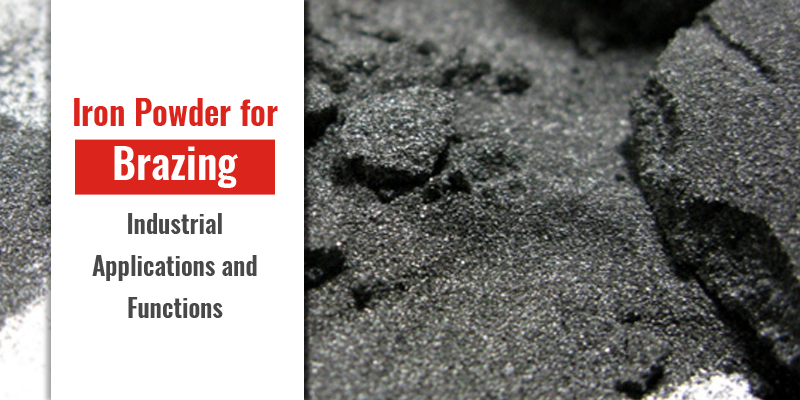Brazing can be defined as a process that includes, metal-joining in which two or more metal items are combined together after melting and adding a filler metal to the joint. The filler metal should have a lower melting point in comparison with the adjoining metal. In the last couple of decades, the progress in technology has had an impact on various industrial sectors.
Advantages of iron powder brazing
Powder-metal (PM) iron-based alloys have been widely used as structural parts in mechanical components owing to a strong balance between tensile strength and ductility. Further, low costs, enhanced performance, impressive magnetic properties, adjustable manufacturing, and high resistance to corrosion are some of the other benefits associated with iron powder-based brazing.
Owing to the various advantages linked to the usage of iron powder brazing, powder-metal parts have gradually emerged as an effective and crucial substitute for machine parts in several engineering applications. It is important to understand that reluctant effort is required to achieve the most optimum combination of different materials that can handle harsh and severe conditions.
Technical aspects
Let’s take a look at the technical aspects of iron powder brazing closely. At the liquid temperature of the molten filler metal, the flux and the filler metal combine with a very thin layer of the base metal which then cools down to develop into a robust, sealed joint. By principle, the melting temperature of the braze alloy is lower than the melting temperature of the different material that is joined. As a result, the joint that is brazed forms a sandwich of various layers. Each layer is connected to the adjacent layer metallurgically. Iron powder is suitable for brazing applications that are above 900 degrees Celcius.
Brazing processes carried out under extremely high temperatures are conducted under vacuum or in a controlled atmosphere with temperatures for brazing above 900 degrees Celcius.
Applications
Brazing under high temperatures is often used to connect complicated-shaped stainless steel components. Moreover, it finds applications for other base materials such as nickel alloys, diamonds, and copper alloys. The newly developed iron powder brazing filler metals are cost-effective and an effective replacement for nickel-brazing.
Iron powder brazing finds applications in various sectors, including the automotive, industrial and tool industry that demand high resistance to corrosion and oxidation.
The scope of iron powder brazing is expanding with technological advancements and finds applications in several industries. Further, research and development in this domain will continue to find new applications and benefits related to iron powder brazing.







